Optimize Your Presentation Notes with Mind Maps

In today’s world of unending distractions and very short attention spans, creating and delivering a presentation might seem an impossible task. A mind map can help you with this situation. This tool is so simple and yet very effective that you’ll wonder why you haven’t used it before. Mind maps are diagrams that help you organize information around a central idea. Basically, mind maps make your note-taking easy, turning your thoughts into clear presentations.
In this article, we’ll explore what mind maps are, why you should use them for your presentations, how to create a mind map make your presentations go from boring to brilliant.
What Are Mind Maps?
A mind map helps you organize ideas or tasks around a central topic in a visual way, with related ideas branching out from the center. This creates a structured and interconnected layout, typically shown as branches or nodes. Mind maps aren’t just diagrams; they’re versatile tools for brainstorming, note-taking, problem-solving, and planning.
Mind maps present information visually, which helps you grasp complex ideas quickly, encouraging creativity and critical thinking. When everything is displayed on a screen, it gives a complete view of how different areas connect. By visually illustrating relationships between points, mind maps transform PowerPoint presentations into engaging stories that keep the audience interested with their dynamic layout.
Why Use Mind Maps for Presentations?
Building presentations with mind maps offers several advantages that can significantly improve the quality and effectiveness of your presentations. Mind maps provide a visual framework that not only organizes ideas but also simplifies content development, ensuring audience engagement and comprehension. Here are compelling reasons why integrating mind maps into your presentation-building process is beneficial:
Visual Structuring:
Mind maps visually structure information for presentation content, with the central theme or topic at the core and related ideas branching out. This clear layout helps both presenters and audiences grasp the overall structure of the presentation effortlessly.
Clear and Sharp Focus:
By breaking down complex ideas into interconnected concepts, mind maps clarify your message and maintain focus throughout your presentation. This visual clarity prevents information overload and ensures your audience can follow your train of thought seamlessly.
Facilitates Creative Brainstorming:
Mind maps are excellent tools for brainstorming and idea generation. When used in the initial stages of presentation planning, they enable exploration of different angles, identification of key points, and discovery of connections between ideas—resulting in more creative and compelling presentations.
Versatility and Adjustability:
Mind maps offer flexibility as you build your presentation. You can easily rearrange, add, or remove ideas to refine your message or respond to changes in direction. This adaptability keeps your presentation dynamic and relevant to your audience’s needs.
Boosts Engagement and Retention:
Visual elements like colors, images, and icons make mind maps engaging for both presenters and audiences. This visual appeal enhances information retention, as audiences are more likely to remember key points presented in a visually stimulating format.
Improves Efficiency and Effectiveness:
Mind maps streamline the presentation-building process by capturing and organizing ideas efficiently. They are particularly effective in addressing organizational or operational challenges and presenting solutions—improving communication and contributing to successful problem-solving.
Encourages Interaction and Participation:
Digital mind-mapping tools support interactive features that facilitate collaboration with colleagues and engagement with audiences during presentations. Whether gathering feedback, conducting polls, mind maps promote interactive presentations that foster engagement and dialogue.
How to create a Mind map in PowerPoint?
To effortlessly design a mind map in PowerPoint, follow these steps:
1. Open PowerPoint and choose a “Blank” presentation.

2. Navigate to the Home tab and click on “Layout.”
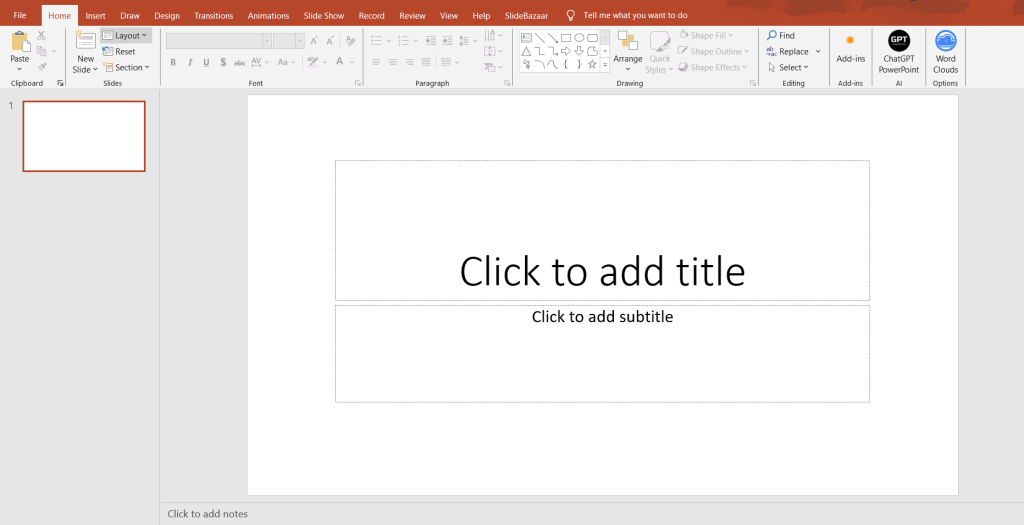
3. Select the “Blank” slide layout from the drop-down menu.
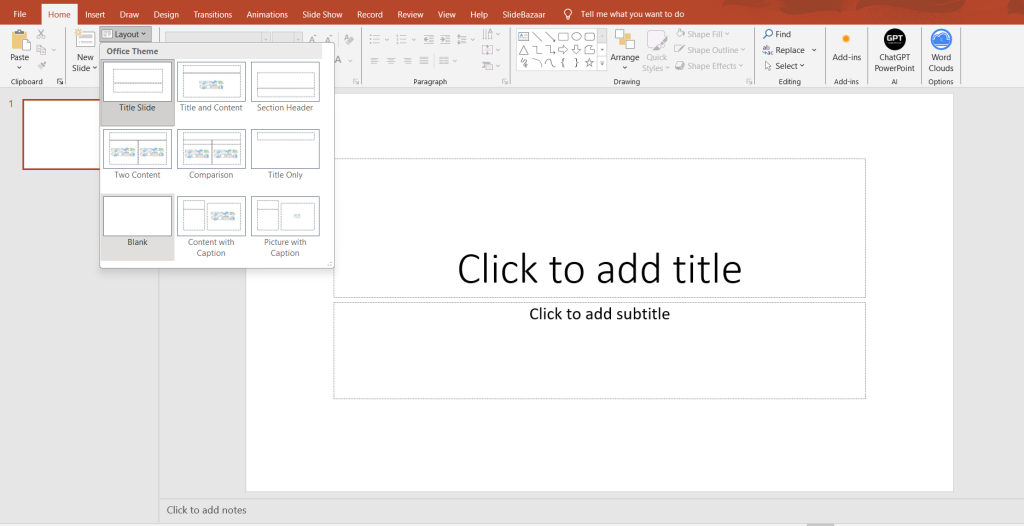
4. Head to the “Insert” tab, then choose “Shapes” from the “Illustrations” section.

5. In the drop-down menu, find the “Basic Shapes” section and pick a shape to represent the central idea of your mind map.
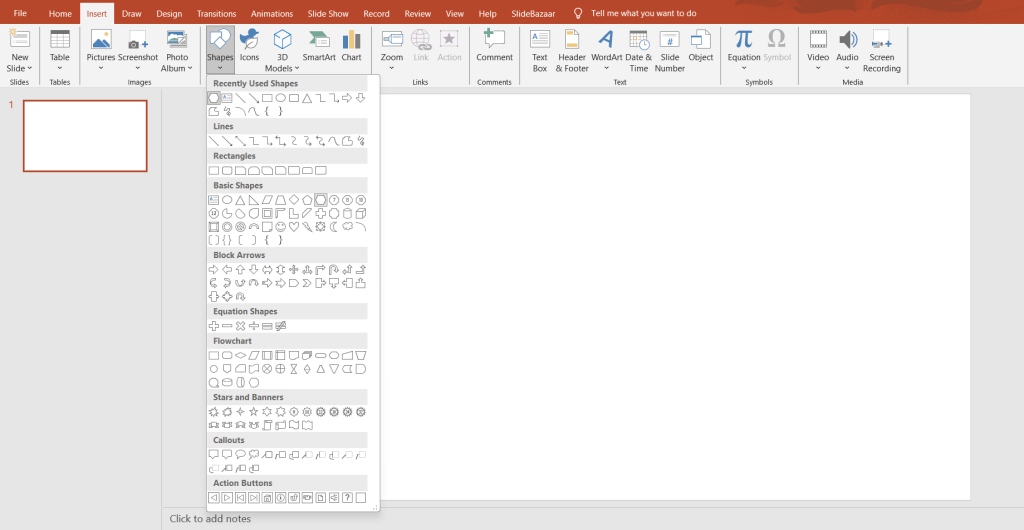
6. Drag your chosen shape to the center of your slide. Next, select another shape for a sub-topic, and duplicate this shape for additional sub-topics.
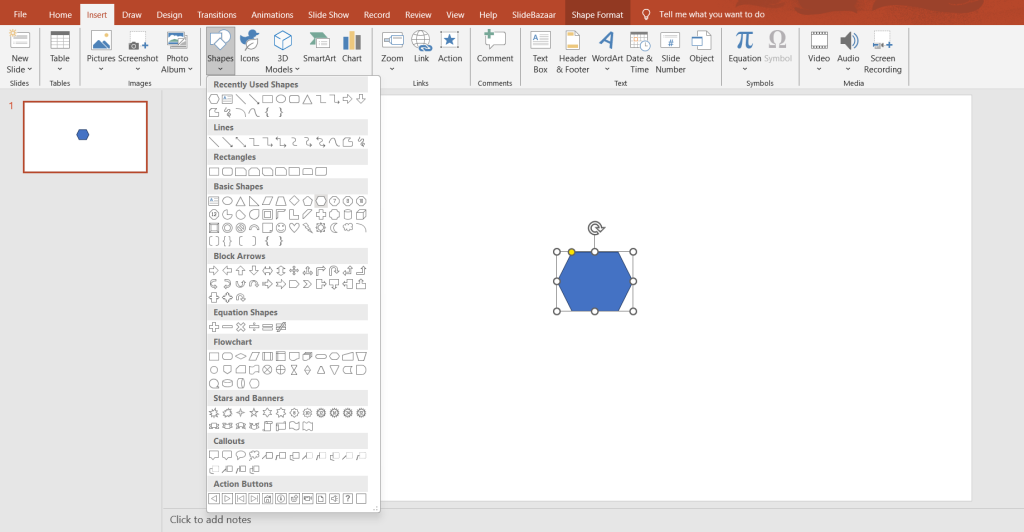
7. Click on the “Insert” tab and choose “Line” to connect your ideas within the mind map.

8. Begin typing labels once you’ve connected the central idea to its sub-topics.
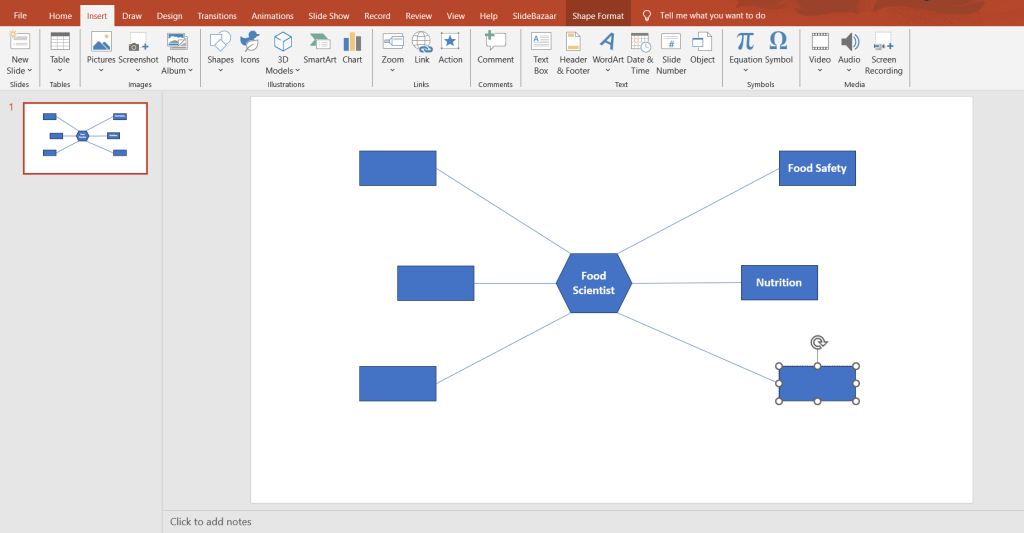
9. After adding all labels, your mind map in PowerPoint is complete.
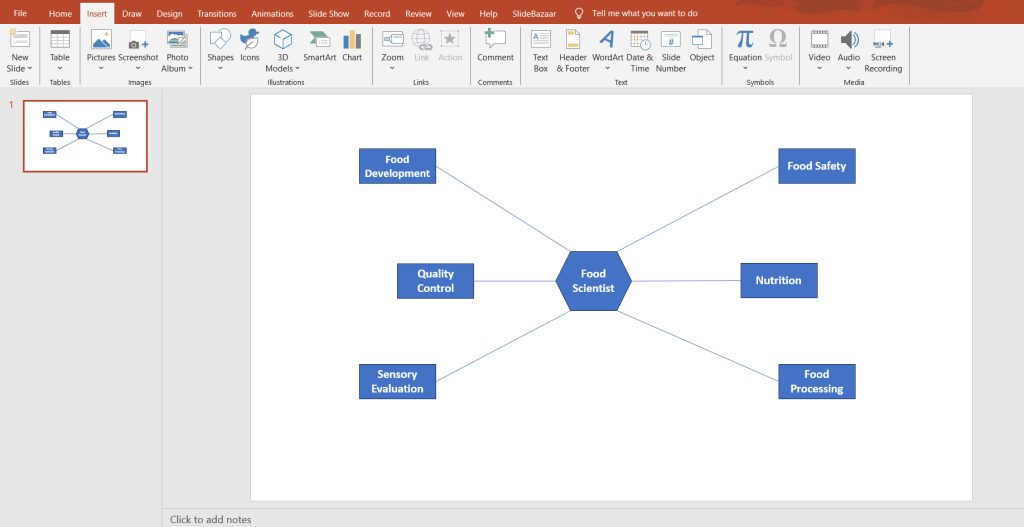
Conclusion
So, there you have it—mind maps aren’t just colorful doodles; they’re your key ally for mastering presentations. These visual tools don’t just organize your thoughts; they boost your creativity, capture your audience’s attention, and ensure your key points stick. Whether you’re simplifying complex topics or impressing with fresh ideas, mind maps turn ordinary presentations into captivating stories. Embrace the power of mind maps and watch how they transform your presentations into memorable journeys that keep your audience engaged. It’s time to move beyond traditional slides and let mind maps unleash your presentation skills!


